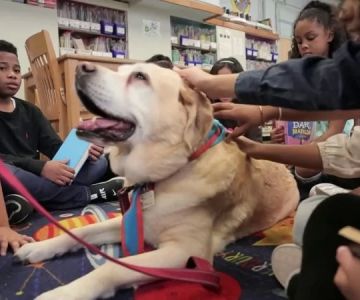- #1-why-impulse-control-training-matters-for-dogs
- #2-understanding-the-commands-leave-it-and-drop-it
- #3-real-stories-of-dogs-learning-impulse-control
- #4-step-by-step-methods-to-teach-leave-it
- #5-effective-techniques-for-teaching-drop-it
- #6-scientific-insights-on-dog-impulse-control
- #7-common-challenges-and-how-to-overcome-them
- #8-how-hidden-brook-veterinary-supports-dog-owners
1. Why Impulse Control Training Matters for Dogs
When exploring How to Train Dogs for Impulse Control (Leave-It, Drop-It), it becomes clear that these skills are about more than obedience. Impulse control helps dogs stay safe, prevents destructive behavior, and improves their relationship with humans. A well-trained dog can resist harmful temptations, like grabbing food from the floor or chewing on dangerous objects.
The Connection Between Training and Safety
Impulse control commands not only protect the dog but also build trust, ensuring they remain calm and responsive in unpredictable environments.
2. Understanding the Commands Leave-It and Drop-It
“Leave-It” teaches a dog to resist approaching or picking up something tempting, while “Drop-It” ensures they release what they already have in their mouth. Together, these commands form the foundation of impulse control and are vital in preventing dangerous situations.
Two Commands, One Purpose
Although distinct, both commands aim to give owners greater influence over their dog’s decisions, making daily interactions smoother and safer.
3. Real Stories of Dogs Learning Impulse Control
In 2023, a viral video showed a Labrador resisting a plate of steak while waiting patiently for his owner’s signal. The clip captured millions of views, showing how powerful and impressive impulse control can be. On the other hand, many dog owners share stories online about how “Drop-It” training saved their pets from swallowing harmful objects like socks or toys.
From Chaos to Calm
These stories prove that training doesn’t just benefit the dog—it also reduces stress for the owner, making life together more enjoyable.
4. Step-by-Step Methods to Teach Leave-It
Start with a treat in your closed hand. When the dog shows interest, say “Leave-It.” The moment they pull away, reward them with a different treat from your other hand. Gradually increase difficulty by placing treats on the floor, reinforcing patience before reward.
Building Gradual Control
Success comes from repetition and positive reinforcement, helping the dog understand that ignoring temptation brings greater rewards.
5. Effective Techniques for Teaching Drop-It
To teach “Drop-It,” offer your dog a toy, then present a high-value treat. When they release the toy, praise and reward immediately. Over time, dogs learn that letting go is not a loss but a path to something better.
Creating Positive Associations
By rewarding cooperation instead of forcing compliance, owners strengthen trust while ensuring obedience during emergencies.
6. Scientific Insights on Dog Impulse Control
Research in animal behavior shows that dogs, like humans, benefit from exercises that strengthen self-regulation. Training commands such as “Leave-It” and “Drop-It” activate cognitive control, making dogs calmer, less reactive, and more attentive to their owners.
The Science of Self-Control
Impulse control is not just about discipline; it’s about training the brain to choose patience over instinct.
7. Common Challenges and How to Overcome Them
Many owners struggle with consistency. Dogs may succeed during practice sessions but fail in distracting real-life environments. Others face challenges when dogs associate “Drop-It” with losing their favorite toy. Patience, gradual training, and high-value rewards are essential to overcoming these obstacles.
Turning Setbacks into Success
Every mistake is part of the learning process. By adjusting methods and staying patient, owners can guide dogs toward reliable behavior.











